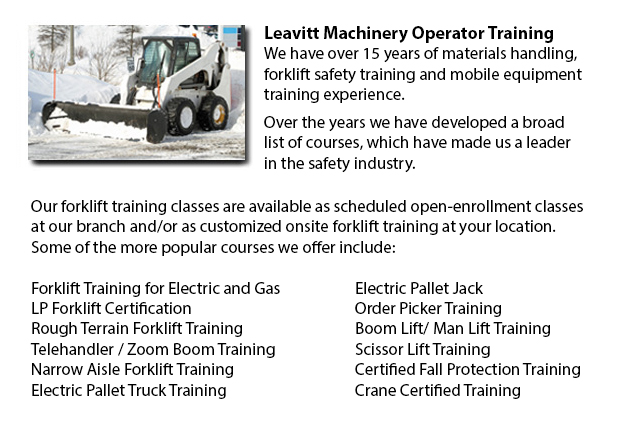
Prince Albert Skid Steer Ticket - On a skid-steer loader, the lift arms are next to the driver along with pivot points at the back of the driver's shoulders. This makes them different compared to a traditional front loader. Due to the operator's closeness to moving booms, early skid loaders were not as safe as conventional front loaders, especially all through the operator's exit and entry. Modern skid-steer loaders today have many features so as to protect the driver like fully-enclosed cabs. Similar to other front loaders, the skid-steer model can push materials from one place to another, is capable of loading material into a trailer or a truck and can carry material in its bucket.
Operation
There are lots of times where the skid-steer loader could be utilized rather than a large excavator on the jobsite for digging holes from within. To start, the loader digs a ramp to be utilized to excavate the material out of the hole. As the excavation deepens, the equipment reshapes the ramp making it longer and steeper. This is a remarkably useful way for digging underneath a building where there is not sufficient overhead clearance for the boom of a large excavator. For instance, this is a common scenario when digging a basement below an existing house or structure.
There is much flexibility in the attachments that the skid steer loaders are capable of. For instance, the traditional bucket of many of these loaders can be replaced with many attachments which are powered by the loader's hydraulic system, comprising tree spades, sweepers, mowers, snow blades, cement mixers, pallet forks and backhoes. Some other popular specialized attachments and buckets consist of trenchers, angle booms, dumping hoppers, wood chipper machines, grapples, tillers, stump grinders rippers, wheel saws and snow blades.
History
During 1957, the very first front-end, 3-wheeled loader was invented in Rothsay, Minnesota by brothers Louis and Cyril Keller. The brothers invented the loader in order to help a farmer mechanize the method of cleaning turkey manure from his barn. This particular machinery was compact and light and had a back caster wheel which enabled it to turn around and maneuver within its own length, enabling it to carry out similar work as a conventional front-end loader.
In the year 1958, the Melroe brothers of Melroe Manufacturing Company in Gwinner, N.D. purchased the rights to the Keller loader. They employed the Keller brothers to continue refining their loader invention. The M-200 Melroe was actually the end result of this partnership. This model was a self-propelled loader which was introduced to the market in 1958. The M-200 Melroe featured a 12.9 HP engine, a 750 lb lift capacity, two independent front drive wheels and a rear caster wheel. By 1960, they replaced the caster wheel along with a rear axle and introduced the very first 4 wheel skid steer loader that was referred to as the M-400.
The M-400 shortly became the Melroe Bobcat. usually the term "Bobcat" is used as a generic term for skid-steer loaders. The M-440 had an 1100 lb rated operating capacity and was powered by a 15.5 HP engine. The company continued the skid-steer development into the mid nineteen sixties and introduced the M600 loader.
-
Prince Albert Forklift Training Courses
Prince Albert Forklift Training Courses - When forklift operator safety training is tailored for illiteracy, training time is lessened by 50 percent. Lift-truck operator driver safety training evaluation, train the trainer and forklift training certi... More -
Prince Albert Heavy Equipment Training
Prince Albert Heavy Equipment Training - The two most common kinds of heavy equipment training are classed into the categories of equipment; equipment which is fashioned with rubber tires or those with tracks. The tracked vehicle are heavy duty machi... More -
Prince Albert Order Picker License
Prince Albert Order Picker License - Order preparation operation or order picking as it is more usually known is a method utilized within warehouse operations and comprises staff called order pickers. The order picker's duty is to take and collect ar... More -
Operator Safety Training, Re-Qualification Training, In-House Instructor Training in Prince Albert
Used in nearly all warehouse operations, boat yards or industrial construction sites, the lift truck is a very important part to be able to help raise and transfer cargo. The reach feature of a lift truck can help improve the applications which the f... More -
Prince Albert Overhead Crane Certification
Prince Albert Overhead Crane Certification - The overhead crane training certification program is designed to be effective with all those participating regardless of language or literacy restrictions. The course has two parts: a practical training se... More -
Prince Albert Heavy Equipment Training Programs
Prince Albert Heavy Equipment Training Programs - There are different types of equipment that are ready to be utilized at any given time on a construction site. These equipment require mechanics to be able to complete the maintenance tasks, operators... More -
Prince Albert Crane Operator Certification
Prince Albert Crane Operator Certification - The process to allow individuals to operate specific kinds of cranes is to take crane operator certification training to be given certification. The certification process consists of classroom learning, ha... More -
Prince Albert Crane Safety Training
Prince Albert Crane Safety Training - Both crane driver as well as their employers should know all the possible issues associated to the use of an overhead crane. All over North America, there is legislation that provides regulation for the safe oper... More

Forklift Certification Prince Albert
TOLL FREE: 1-888-254-6157
Prince Albert, Saskatchewan
forkliftcertificationprincealbert.com
Email Us
About Us


